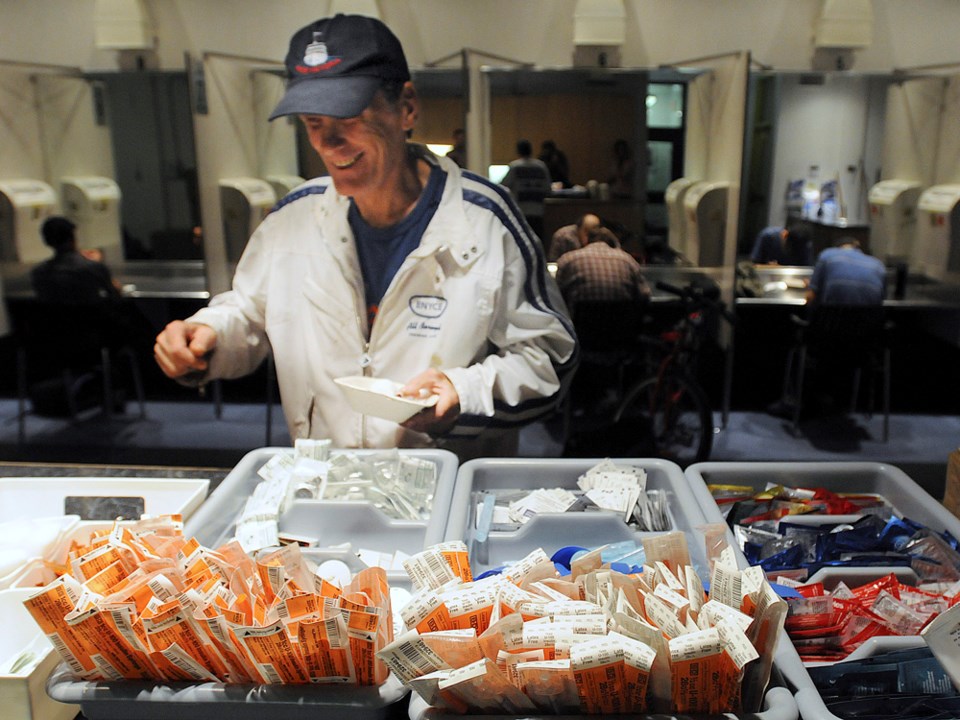As the opioid crisis rages on across North America, a number of recent studies are pointing to cannabis and prescription heroin as viable options in curbing the consumption of lethal street opiates, reducing long-term medical and policing costs and extending the lives of users.
An analysis of opioid prescriptions in the U.S.published on Monday by the American Medical Association showed a significant decrease in opioid prescriptions in states that have adopted some sort of cannabis legislation. Using data from 2010 to 2015, the analysis counted 3.7 million fewer daily doses of opioids prescribed in states that allow weed dispensaries, while states that allow only home cultivation saw a decrease of 1.8 million daily prescribed doses.
“Most opioid overdoses are associated with legitimate opioid prescriptions,” researchers wrote. “A growing consensus suggests that cannabis can be used to effectively manage pain in some patients. If initial licit prescriptions for opioids can be reduced, then there is a plausible theoretical pathway to anticipate that opioid misuse and abuse could also fall.”
One report paper by Centre for Health Evaluation and Outcome Sciences (CHEOS) published in the journal Addiction in late March looked at the economic effects of the Study to Assess Long-term Opioid Maintenance Effectiveness (SALOME) trials in Vancouver’s Downtown Eastside. The authors found that substituting street opiates with either hydromorphone or diacetylmorphine (prescription heroin) may be costlier than traditional methadone use, but in the long-run drug users were not committing as many crimes to support their habit. According the report, this can result in societal savings of $140,000 per patient, while prolonging the lives of people whose life expectancy is relatively short by an average of three years.
“Our findings suggest therefore, that [hydromorphone] could be an attractive use of health-care resources from the societal perspective, if prices for [hydromorphone] can be negotiated effectively to reflect its value,” the researchers wrote.
Nick Bansback, associate professor at UBC’s School of Population and Public Health and one of the report’s authors, said the results of his economic analysis of the SALOME trials show that such harm reduction policies save money in the long run.
“We spend lots of money on new drugs, which have marginal benefit and add those to our formularies,” Bansback said. “And when I look at [hydromorphone therapy]… which has quite considerable benefit… from a tax payer perspective [it] saves us money.”
Mayor Gregor Robertson has called for decriminalizing possession of illicit drugs alongside new ways of treating those with opioid addiction after Canada’s public health agency estimated that roughly 4,000 people in Canada died of an overdose in 2017, mostly from opioids.
For its part, the federal government relaxed rules for prescribing methadone and pharmaceutical heroin in late March. Health Canada also announced it will put money towards finding new approaches to treatment of opioid use, for which the Canadian Institutes of Health Research will be responsible.
In an email, CIHR’s media spokesperson David Coulombe said research funding to the tune of $1.4 million will fund 14 projects to inform upcoming cannabis legalization, including studying the plant’s products as a harm reduction method for opioid users. One of those research projects at McMaster University has looked into how cannabis can be used as an “exit drug” for almost 1,400 opioid users.
“This funding opportunity is designed to serve as an initial step in laying the foundation for future studies on the impact of cannabis legalization in Canada,” Coulombe wrote.
He added that there is an additional $1.9 million for 22 projects to work together with workers on the front lines of the opioid crisis “to identify knowledge gaps and synthesize the opioid-related literature, in order to rapidly enable evidence-informed decisions in Canadian policy and practice.”
In an on-going program in the Downtown Eastside, medical dispensary My Eden and the BCCSU are studying the effects of substituting street opiates with cannabis oil. Though the study is limited in size, with only 16 subjects partaking since the start in January, Denise Brennan, the program’s director, said many of the participants have experienced an increased quality of life.
One of the participants, she said, managed to reduce his alcohol consumption by 60 per cent, which has prompted her to expand the research team to focus on treatment of alcoholism, especially in First Nations communities. She added the goal of the program is not complete abstinence or sobriety, but harm reduction.
“It’s specifically about reducing the usage part, which kind of implies cravings, so one of the items in the opiate study is essentially to head off withdrawal symptoms,” Brennan said, adding that study subjects are given two pills containing 25mg of tetrahydrocannabinol (THC) oil a week and then questioned for the effects. “Our feedback on that is that indeed it heads off withdrawal symptoms, so people are able to go longer between opiate ingestion because they’re not getting the kicks.”



